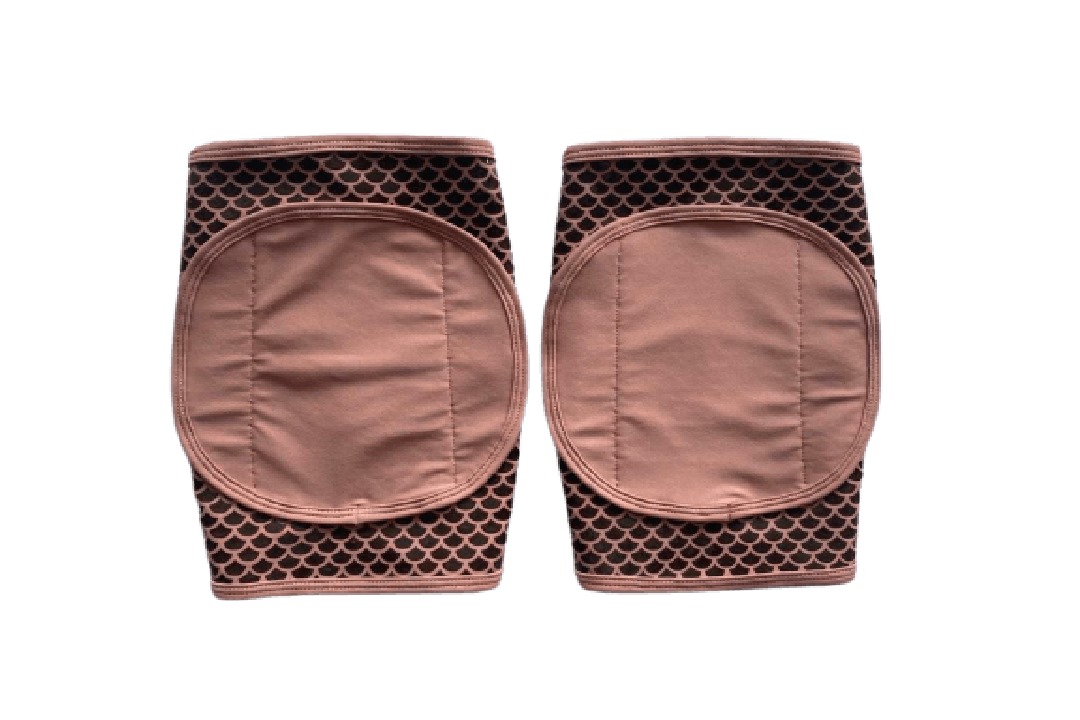HEALTH
Exploring the Benefits of Creatine in the Best Supplement Stack for Muscle Gain

Are you searching for the best supplement stack for muscle gain? The quest for the perfect combination can be complex.
Among the myriad of options, one stands out significantly-creatine. This powerhouse ingredient is indispensable in the realm of muscle gain. It’s not just about increasing size; it’s about enhancing strength and accelerating recovery.
Delving into how creatine magnifies the effects of other supplements reveals the true potential of your stack. Unlock the secrets to optimal muscle gain with us.
Understanding Creatine
Creatine is a natural chemical that is found in muscle cells. It is best known for helping the body make energy during short, intense workouts. It is one of the supplements that has been studied the most and has been shown to help athletes do better.
When eaten, it raises the body’s phosphocreatine level, which is needed to make new ATP when you work out. This makes you stronger, builds muscle, and speeds up the recovery process. Creatine is good for athletes, but it can also help with brain function and mental fatigue.
It’s safe for most people when they take the recommended amounts, despite what some people think. Adding creatine to a stack of supplements can help you gain muscle and do better in your workouts.
The Science Behind Creatine’s Effectiveness
The main reason why creatine works so well is that it can quickly make ATP, which is the energy source for muscle contractions. When you do high-intensity exercises, your muscles lose phosphocreatine.
Taking creatine supplements raises these phosphocreatine levels, which lets you work out for longer and harder. Studies have shown over and over that taking creatine makes people stronger and builds more muscle. It makes cells more hydrated, which makes muscles bigger.
In addition, creatine stops proteins from breaking down, which helps muscles grow even more. All of these reasons explain why creatine is so important for improving performance.
Creatine as a Powerhouse Performance Enhancer
Creatine is one of the best performance boosters because it can improve athletic skills better than anything else. Phosphocreatine levels rise significantly, which changes how our muscles make and use energy during intense workouts.
This leads to long periods of high-intensity performance, which is what every athlete who wants to push their limits wants. Notably, creatine doesn’t just improve physical performance; it also makes it easier to think clearly when you’re stressed.
The key to its effectiveness is how quickly it restores ATP. In addition, the fact that it increases the volume of muscle cells helps explain why muscles get bigger and stronger. Creatine is a great supplement for athletes that can be used for a long time without any problems.
Maximizing Muscle Growth
Getting enough creatine isn’t the only way to boost muscle growth; you also need to watch what you eat, work out, and rest. Proteins are very important because they are what muscles are made of.
When you do progressive overload training regularly, your muscles are always being pushed to get stronger. Staying hydrated is important for muscle recovery and function.
Taking rest days in your schedule helps your muscles grow and repair themselves. Taking creatine supplements can help with these efforts by giving you more energy and performance.
The Foundation of Muscle Growth
A complex balance of strength training, nutrition, and recovery is what makes muscle growth possible. The first step is to put your muscles to the test by lifting weights or doing other resistance training.
This causes tiny tears in the muscle fibers. When the body is under stress, it repairs and strengthens the fibers, which makes muscles grow.
Nutrition is very important; a diet high in protein helps muscles grow and repair themselves. Also, it’s important to stay hydrated because water is an important part of muscle cells.
Getting enough rest and sleep is important for recovery because it helps the body heal and get stronger. Taking creatine supplements can make these processes even better, which can help with performance gains and muscle growth.
Fueling Muscle Growth and Recovery
To help muscles grow and recover, you need to pay close attention to your diet, stay hydrated, and get enough rest. Proteins and carbs that you eat in the right amounts after a workout help muscles heal and glycogen levels rise.
It’s important to stay hydrated because water helps nutrients get to muscle cells. Taking creatine supplements can help you recover faster by making it easier for your body to make new ATP.
Getting enough sleep helps the body’s natural repair processes, which makes muscles grow. Planned days off keep you from overtraining and let your muscles fully recover. All of these parts work together to make a complete plan for improving muscle growth and recovery.
Delaying Muscle Fatigue for Extended Workouts
Keeping muscles from getting tired too soon is important for extending workouts and improving performance. Taking extra creatine is very important for this because it restores ATP levels. In turn, this makes it possible to keep up high-intensity efforts for longer.
A balanced diet and staying hydrated are also good ways to keep your energy up. Increasing your endurance over time is another benefit of progressive training.
Rest days are very important because they let the body heal and adjust. By using these tips, you can greatly delay the start of muscle fatigue, which will allow you to train harder and for longer periods.
Enhancing Blood Flow for Optimal Nutrient Delivery
Improving blood flow is essential for getting nutrients to muscles efficiently, which is good for health and performance in general. Better circulation makes sure that oxygen and important nutrients get to muscle tissues quickly, which helps them recover and grow faster.
Some supplements, like L-arginine and beetroot extract, have been shown to help blood flow by making blood vessels work better. Cardiovascular exercise regularly is also very important for keeping arteries healthy.
In addition to exercise, massage, and stretching can also help improve circulation. All of these strategies work together to help the body get nutrients to the places they are needed most.
Creatine Monohydrate vs. Other Forms
The form of creatine that has been studied the most and is used the most is creatine monohydrate. It gets good reviews for how well it works to build strength, bulk up muscles, and speed up recovery.
Monohydrate creatine is often chosen over other forms, like creatine ethyl ester or creatine hydrochloride, because it is cheaper and there is more evidence to support its benefits. Different forms say they are better at dissolving or absorption, but research doesn’t always back these claims up. The ease of use and effectiveness of creatine monohydrate make it a standard supplement for both athletes and fitness fans.
Understanding Creatine Loading and Cycling Protocols
When you load your muscles with creatine, you take higher doses for a short time to quickly saturate them. Then, you take a lower maintenance dose. This plan usually lasts for 5 to 7 days at a dose of 20 grams per day, and then the dose is lowered to 2 to 5 grams per day.
Take creatine for a few weeks or months, then stop for a while and start again. This is called “cycling creatine.” The goal of this method is to get the most out of creatine while also giving the body a break. It’s thought to help keep the body’s ability to respond to creatine.
However, research on why cycling is important hasn’t come to a clear conclusion. If you know these steps, you can make sure that taking creatine supplements fits your needs and goals.
The Importance of Proper Hydration with Creatine Supplementation
When taking creatine supplements, it’s very important to stay hydrated. Muscle cells hold on to more water when you take creatine, so you need to drink more water to stay hydrated.
Dehydration can counteract the performance-boosting effects of creatine by making muscles work less well. Also, drinking enough water helps creatine get to the muscles more efficiently, which increases its benefits.
It also helps keep digestive problems like cramps and bloating from happening when you use creatine. When taking your creatine dosage, experts say you should drink at least 8 to 12 glasses of water every day.
Addressing Safety Concerns
There are a lot of worries about the safety of taking creatine supplements, but most of them are not backed up by research. Studies have shown over and over that taking creatine in the recommended amounts is safe for healthy people to use for a long time.
Some minor side effects, like gas or stomach pain, may happen, but they usually only last a short time. Buying creatine from a reputable source is important to make sure the product is pure and free of any impurities.
People who already have kidney problems should talk to a doctor before starting to take creatine. It is safe to use as long as it is monitored regularly and the recommended doses are followed.
Potential Side Effects of Creatine Supplementation
Supplementing with creatine is widely used and studied, and most people who do it don’t have any major side effects. One person, though, might feel some minor discomforts, like bloating or stomach problems.
This is usually because the body is getting used to having more creatine in it. Muscle cramps are a less common side effect that can usually be helped by drinking lots of water.
You can also gain weight by holding on to water, but this is usually only a short-term problem. To keep side effects to a minimum, it’s important to take the medicine as prescribed.
The Role of Nutrition and Exercise in Maximizing Creatine Benefits
The best way to get the most out of creatine is to combine it with good nutrition and exercise. A diet high in protein and carbs helps the body absorb creatine and heal muscles faster.
Muscles fully use creatine for energy and growth when they are trained hard and regularly. It’s important to stay hydrated because water helps creatine get into muscle cells.
Planned rest days help muscles heal and grow, which makes creatine work better. Taking creatine at the right time, like right after a workout, can help you perform better and make more gains. A well-balanced diet, regular exercise, and creatine supplements work together to help athletes do better.
Integrating Creatine into Your Fitness Journe
If you want to improve your workout performance and recovery, adding creatine to your fitness routine is a smart move. Start with a loading phase to build muscle quickly. After that, switch to a maintenance dose.
For the best absorption, eat it with a healthy diet that is high in proteins and carbs. When taken at the right time after a workout, it can help with recovery and muscle growth.
Remember that staying hydrated is important when taking creatine supplements to make sure they work and to lessen the chance of side effects. It’s best to keep an eye on your fitness progress and make changes as needed. As long as you use creatine wisely and responsibly, it can help you reach your fitness goals much more quickly.
Maximizing Results
Getting the most out of creatine supplements requires a disciplined plan that includes good nutrition, exercise, and the right schedule for taking your workout supplements. Getting enough protein and carbs is important for taking in creatine and helping muscles recover.
Muscles use the extra energy that creatine gives them when they work out hard and regularly, which leads to more muscle strength and mass. It’s important to stay hydrated to help creatine work better and lower the risk of side effects. By following these rules, people can expect to see big changes in their performance and bodies over time.
It’s not just about piling on different products but selecting those that work harmoniously to enhance muscle growth, strength, and recovery. Wilsonsupplements.com offers a curated selection of products that are designed to work well together, optimizing your gains from every angle.
Discover Your Ultimate Best Supplement Stack for Muscle Gain
It might seem hard to find the best supplement stack for muscle gain, but knowledge and planning can help. To build muscle, you need creatine, whey protein, and BCAAs.
These make you stronger, last longer, and recover faster. Adapting this choice to your objectives will yield the best results.
From what you eat to how you work out, this all-around approach needs you to be consistent. Finally, the right stack helps you get stronger.
HEALTH
Knee Pads for Pole Dancing: Features of Choosing for Professional Dancers

Pole dancing has evolved into a demanding sport that requires a combination of flexibility, strength, and control. For professional dancers, protection during intense training sessions is just as essential as technique. One of the most crucial accessories for safety and performance enhancement is the knee pad. The right pair can make the difference between smooth movement and painful bruises. Understanding how to select the best knee pads for pole dancing ensures both comfort and confidence during every spin, slide, and drop.
Why Knee Pads Are Essential for Pole Dancing
Knee pads are not just for beginners. Even experienced pole dancers rely on them to protect joints from impact and friction burns. The repetitive contact with hard surfaces and the pole itself can lead to discomfort or even long-term injuries if proper protection isn’t used. Professional-grade knee pads are designed to absorb shock while maintaining a sleek, flexible fit that allows dancers to transition seamlessly from floorwork to pole tricks. Unlike typical sports knee pads, those made for pole dancing feature a balance between grip and glide. Dancers need to maintain contact with the floor during choreography but also require traction to hold positions. This is why materials matter — from soft neoprene blends to high-density foam padding — each element contributes to both protection and mobility. An excellent example of high-quality pole dance protection can be found in the grip enhanced knee pads from QueenWear, designed specifically for dancers who value durability and functionality in every movement. These pads combine advanced cushioning with a secure grip surface, ensuring dancers can move freely without compromising safety.
Key Features to Look For in Professional Knee Pads
When choosing knee pads for pole dancing, professional performers should consider several critical factors. First is fit and flexibility — pads that are too tight can restrict movement, while loose ones can slip during routines. A contoured, anatomical design allows the knee pad to move naturally with the body, providing continuous coverage throughout all stages of motion.
Next, consider the level of grip. Some routines demand more floor traction, while others need smoother slides for artistic effect. The ideal knee pad offers interchangeable or dual-surface options, allowing dancers to adjust to different choreography needs. Breathable materials are also key; since pole dance sessions can be intense, sweat-wicking fabrics help maintain comfort during long rehearsals. Aesthetic value is another overlooked but important aspect. Dancers often perform in front of audiences, and knee pads should complement the costume rather than distract from it. Modern designs now offer stylish cuts and colors that merge seamlessly with pole wear outfits, making them both practical and visually appealing. For those building a complete pole dance wardrobe, it’s worth noting that stylish and durable dancewear can also be found at queenwearOfficial, where function meets fashion for every level of performer.
How to Choose Based on Skill and Style
Professional dancers often have different needs depending on their discipline. Contemporary pole artists who combine acrobatics with expressive floorwork may prefer softer padding with maximum flexibility. Exotic pole dancers, on the other hand, usually favor knee pads with stronger grip for better control during transitions and body rolls. Beginners should focus on protection and comfort first, while advanced dancers may prioritize thin, low-profile pads that provide freedom of movement and enhance the aesthetic flow of their performance. In addition, dancers should test their pads in motion before committing to a specific model. Practicing spins, drops, and crawls helps determine whether the padding thickness and grip meet personal comfort and performance standards. Regular maintenance, such as cleaning and checking for wear, will extend the lifespan of the pads and keep them hygienic for studio use.
Choosing knee pads for pole dancing is not only about safety — it’s about optimizing artistry. With the right pair, every dancer can train harder, perform longer, and express movement with confidence and grace.
HEALTH
BCBS of TX + HSA: The Perfect Pair for Affordable Healthcare Coverage

As healthcare costs continue to rise in 2025, Texas residents and businesses are seeking innovative ways to manage expenses without sacrificing quality coverage. Pairing BCBS of TX with HSA Insurance offers a powerful solution, combining the reliability of Blue Cross Blue Shield’s extensive network with the tax advantages and flexibility of a Health Savings Account (HSA). This combination is particularly appealing for individuals, families, and small businesses in Texas looking to optimize healthcare spending while maintaining access to top-tier providers. This article explores why this pairing is ideal, how it works, and practical steps to maximize its benefits.
Dive deeper—this related read builds on what you just discovered
Understanding BCBS of Texas High Deductible Plans
Blue Cross Blue Shield of Texas (BCBS of TX) offers a range of high-deductible health plans (HDHPs) that qualify for HSA use, making them a cornerstone of cost-effective healthcare. For 2025, IRS guidelines define HDHPs as plans with minimum deductibles of $1,650 for individuals and $3,300 for families, with out-of-pocket maximums capped at $8,050 and $16,100, respectively. BCBS of TX plans, such as the Blue Advantage HMO or Blue Choice PPO, meet these criteria, offering access to over 50,000 providers across Texas and streamlined claims processing.
A key feature of BCBS HDHPs is their coverage of preventive care at 100% before the deductible is met. This includes annual checkups, vaccinations, and screenings like mammograms, ensuring Texans can prioritize wellness without upfront costs. Premiums for these plans are typically 20-40% lower than traditional low-deductible plans, with monthly costs for a family averaging $500-$700 compared to $800-$1,000 for non-HDHPs, based on 2025 market data. This reduction frees up funds for HSA contributions, creating a financial buffer for out-of-pocket expenses.
BCBS of TX also offers robust telehealth services and prescription drug coverage, which pair well with HSAs for managing routine costs. The plans’ flexibility across urban and rural Texas ensures accessibility, whether in Houston or smaller communities. For small businesses or individuals, exploring options through BCBS of TX provides a tailored approach to affordable coverage.
Why Adding an HSA Can Cut Your Out-of-Pocket Costs
An HSA transforms how Texans manage healthcare expenses by offering a triple tax advantage: contributions are tax-deductible, funds grow tax-free, and withdrawals for qualified medical expenses—like copays, prescriptions, or dental care—are tax-free. In 2025, individuals can contribute up to $4,300, families up to $8,550, with an additional $1,000 catch-up for those 55 and older. For a family in a 22% tax bracket, maxing out an HSA saves approximately $1,880 in federal taxes, plus potential state tax reductions.
Pairing an HSA with a BCBS of TX HDHP amplifies savings. The lower premiums of HDHPs—often 30% less than traditional plans—allow individuals or employers to fund HSAs with the difference. For example, a family saving $300 monthly on premiums could redirect $3,600 annually to an HSA, covering most or all of their deductible. Studies show HSA users spend 10-15% less on healthcare due to price shopping, such as choosing generic drugs or negotiating provider rates.
HSA for America Blog also offer long-term benefits. Unlike FSAs, funds roll over indefinitely and can be invested in stocks, bonds, or mutual funds, similar to a 401(k). For instance, a 40-year-old contributing $4,000 annually at a 5% return could amass over $150,000 by age 65, per financial projections. This makes HSAs a dual-purpose tool: immediate expense coverage and future financial security. For Texans with BCBS plans, HSAs provide a safety net for deductibles while preserving access to BCBS’s extensive network.
How to Combine BCBS and HSA Benefits
Integrating a BCBS of TX HDHP with an HSA is straightforward and maximizes both coverage and savings:
- Enroll in a BCBS HDHP: Confirm the plan meets HSA requirements. Use BCBS of TX resources or a broker to select a plan suited to your needs, considering network size and telehealth options.
- Open an HSA: Choose a provider like Fidelity, HealthEquity, or a local bank offering no-fee accounts with investment options. Link the HSA to your BCBS plan for seamless expense tracking.
- Fund the Account: Contribute via payroll deductions (pre-tax for employees) or direct deposits. Employers can match contributions, enhancing benefits. For example, a $2,000 employer contribution saves $440 in employee taxes (22% bracket) and $610 in employer payroll taxes.
- Use HSA Funds: Pay for qualified expenses—copays, prescriptions, or even LASIK—using an HSA debit card or reimbursement. BCBS covers post-deductible costs, ensuring comprehensive care.
- Monitor and Invest: Track expenses via HSA apps and invest surplus funds for growth. Unused funds remain yours, unlike traditional plan benefits.
For setup guidance, HSA for America offers tools like calculators and expert consultations to simplify the process. Small businesses can streamline group HSAs, while individuals can explore plans tailored to Texas’s diverse healthcare landscape.
Tips for Managing Your HSA Efficiently
Maximizing an HSA with a BCBS of TX plan requires strategic management:
- Maximize Contributions: Contribute the full $4,300/$8,550 limit if possible to maximize tax savings. Even partial contributions, like $100/month, build a buffer.
- Invest Early: Many HSA providers offer investment options after a minimum balance (e.g., $1,000). A diversified portfolio can yield 4-6% annually, compounding over time.
- Track Expenses: Use HSA apps or online portals to log qualified expenses, ensuring compliance with IRS rules. Keep receipts for audits.
- Leverage Preventive Care: BCBS HDHPs cover screenings and vaccines pre-deductible, reducing HSA withdrawals for routine care.
- Plan for the Future: After age 65, HSA funds can cover Medicare premiums (not Medigap) or non-medical expenses with only income tax, no penalty.
- Seek Expert Guidance: Resources like HSA for America provide free quotes, webinars, and advisors to optimize your HSA strategy.
Regularly review your HSA balance and healthcare needs during open enrollment to adjust contributions or investments. For Texans, this ensures alignment with BCBS’s robust coverage, from specialists in Dallas to rural clinics.
Conclusion
Pairing BCBS of TX with HSA Insurance is a smart strategy for affordable healthcare in 2025. The combination leverages BCBS’s trusted network and low-premium HDHPs with HSA’s tax advantages and flexibility, offering Texans financial control and peace of mind. Whether you’re an individual, family, or small business owner, this approach reduces out-of-pocket costs while maintaining access to quality care. Explore options with HSA for America to customize your plan and start saving today.
Don’t miss our top pick—featured content worth your time
HEALTH
How Organic Allulose Syrup Improves Beverage Formulations

In today’s beverage industry, innovation is driven by one word: health. Consumers are moving away from sugar-loaded drinks and artificial sweeteners, seeking natural alternatives that offer great taste without guilt Organic Allulose Syrup. Beverage manufacturers now face the challenge of creating low-calorie, functional, and clean-label beverages that satisfy both the palate and the conscience.
One ingredient that is rapidly redefining this category is organic allulose syrup—a naturally derived sweetener with sugar-like taste, superior solubility, and minimal calories. As a result, it is becoming a preferred ingredient for brands looking to meet consumer demand for better-for-you beverages without sacrificing taste or functionality.
One more read that ties it all together — check out this related story.
1. Natural Sweetness with a Healthier Profile
Organic allulose syrup provides around 70% of the sweetness of sucrose, yet contains less than one-tenth of the calories—approximately 0.4 kcal per gram compared to sugar’s 4 kcal per gram.
This unique profile allows beverage manufacturers to maintain the taste consumers love while drastically reducing caloric content. Unlike other low-calorie sweeteners that often leave a lingering bitterness or metallic aftertaste, organic allulose syrup offers a clean, natural sweetness very close to that of cane sugar.
Because it is metabolized differently by the human body, it contributes almost no usable energy, making it suitable for low-sugar, keto, diabetic-friendly, and weight-management beverages.
For example, a functional juice or ready-to-drink tea formulated with organic allulose syrup can deliver authentic sweetness and clean flavor while staying within the nutritional parameters of modern health-conscious consumers.
2. Excellent Solubility and Stability in Beverages
Formulation performance is as important as taste. Beverage applications require ingredients that blend smoothly, remain stable under heat or acid, and do not alter product texture or clarity.
Organic allulose syrup demonstrates exceptional solubility and thermal stability, dissolving easily in both cold and hot liquids. It maintains consistent sweetness and viscosity even after pasteurization or sterilization, making it ideal for a wide range of beverages—from carbonated soft drinks and fruit juices to functional sports beverages and ready-to-drink coffees.
Its stable performance helps manufacturers achieve uniform sweetness, improved mouthfeel, and consistent product quality during large-scale production.
3. Clean Label and Organic Certification
Modern consumers are increasingly skeptical of artificial ingredients and synthetic additives. They are reading labels closely, preferring beverages that are organic, natural, and transparently sourced.
Organic allulose syrup supports this clean-label movement perfectly. Derived from natural sources such as figs, jackfruit, and raisins, it can be certified organic and non-GMO, offering manufacturers a transparent, sustainable sweetening solution.
Its plant-based origin also aligns with the vegan and eco-friendly positioning that many beverage brands are now emphasizing. This allows companies to use organic allulose syrup not only as a functional ingredient but also as a marketing advantage, appealing to premium and health-focused consumers alike.
4. Ideal for Functional and Keto-Friendly Drinks
The global market for functional beverages—those fortified with proteins, fibers, or botanical extracts—is expanding rapidly. However, many of these drinks struggle with taste balance, as natural ingredients can create bitterness or off-notes when sugar is reduced.
Here, organic allulose syrup acts as an ideal flavor balancer, masking bitterness and improving mouthfeel without adding unwanted calories or carbohydrates.
Moreover, it has a low glycemic index and does not raise blood sugar or insulin levels, making it a keto-compliant and diabetic-safe ingredient. Beverage formulators can pair it with prebiotic fibers, electrolytes, or plant-based proteins to create drinks that are both functional and enjoyable.
5. Versatility Across Beverage Categories
The applications of organic allulose syrup in beverage manufacturing are extensive. It can be used in:
- Carbonated soft drinks: Provides smooth sweetness and balanced mouthfeel without sugar spikes.
- Juice blends and smoothies: Enhances fruit flavor while reducing calorie content.
- Sports and energy drinks: Offers quick sweetness with excellent solubility and stability.
- Ready-to-drink teas and coffees: Ensures a consistent sweetness and clean aftertaste.
- Plant-based and dairy alternatives: Improves body, texture, and overall flavor balance.
This versatility allows formulators to replace sugar or artificial sweeteners in almost any beverage category while maintaining sensory and physical properties.
6. Sustainability and Consumer Trust
Beyond performance, organic allulose syrup contributes to the sustainability narrative that is shaping the beverage industry. Its organic certification, plant-based origin, and environmentally friendly production process resonate strongly with today’s conscious consumers.
By using organic allulose syrup, beverage brands can enhance product transparency, reduce environmental impact, and reinforce consumer trust—essential elements in building long-term brand value.
Organic allulose syrup is redefining what’s possible in beverage formulation. It combines natural sweetness, calorie reduction, clean-label appeal, and technical versatility—a rare combination that enables beverage manufacturers to innovate confidently in the fast-growing health and wellness market.
At ORGANICWAY, we provide high-purity, certified organic allulose syrup tailored for beverage manufacturers worldwide. Whether you’re developing a low-calorie juice, a functional sports drink, or a premium plant-based beverage, our syrup ensures consistent quality and superior performance.
Contact ORGANICWAY today to request samples or discuss bulk supply options for your next beverage formulation project.
Explore more insights and uncover hidden gems you haven’t seen yet.

 GENERAL4 months ago
GENERAL4 months ago5 Factors That Affect Tattoo Removal Success

 ENTERTAINMENT2 days ago
ENTERTAINMENT2 days agoExploring the Kristen Archives: A Treasure Trove of Erotica and More

 LIFESTYLE8 months ago
LIFESTYLE8 months agoThe Disciplinary Wives Club: Spanking for Love, Not Punishment

 TECHNOLOGY8 months ago
TECHNOLOGY8 months agoBlog Arcy Art: Where Architecture Meets Art

 LIFESTYLE1 month ago
LIFESTYLE1 month agoWho Is Sandra Orlow?

 ENTERTAINMENT10 months ago
ENTERTAINMENT10 months agoThe Ultimate Guide to Shillong Teer Hit Number: How to Predict Your Next Win

 LIFESTYLE4 weeks ago
LIFESTYLE4 weeks agoWho Is Wife Crazy Stacie

 LIFESTYLE3 weeks ago
LIFESTYLE3 weeks agoBerniece Julien: The Private Life of Tyson Beckford’s Partner












